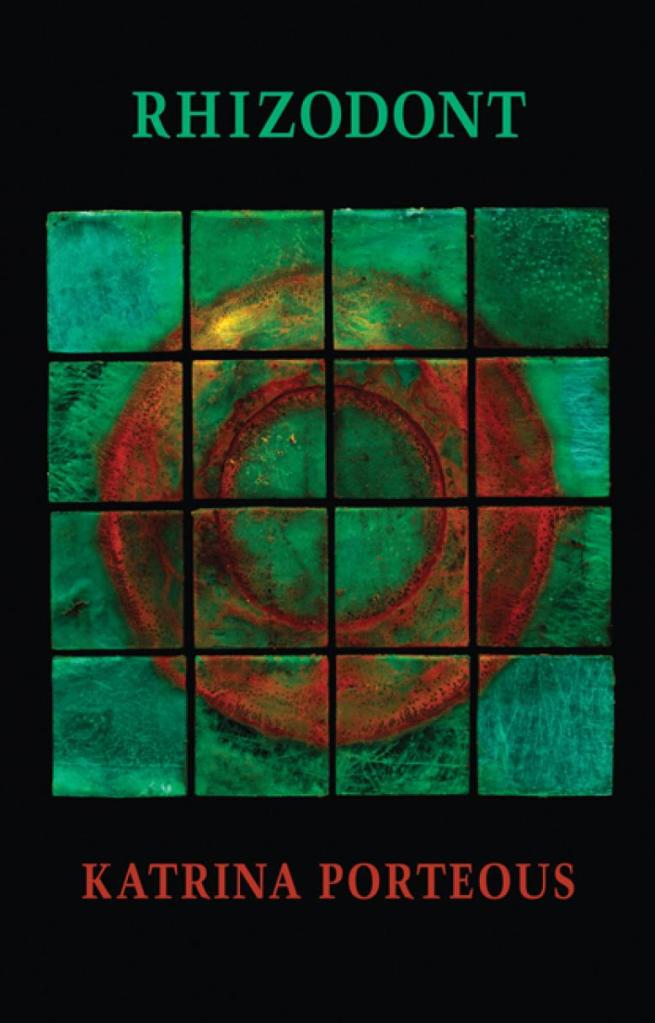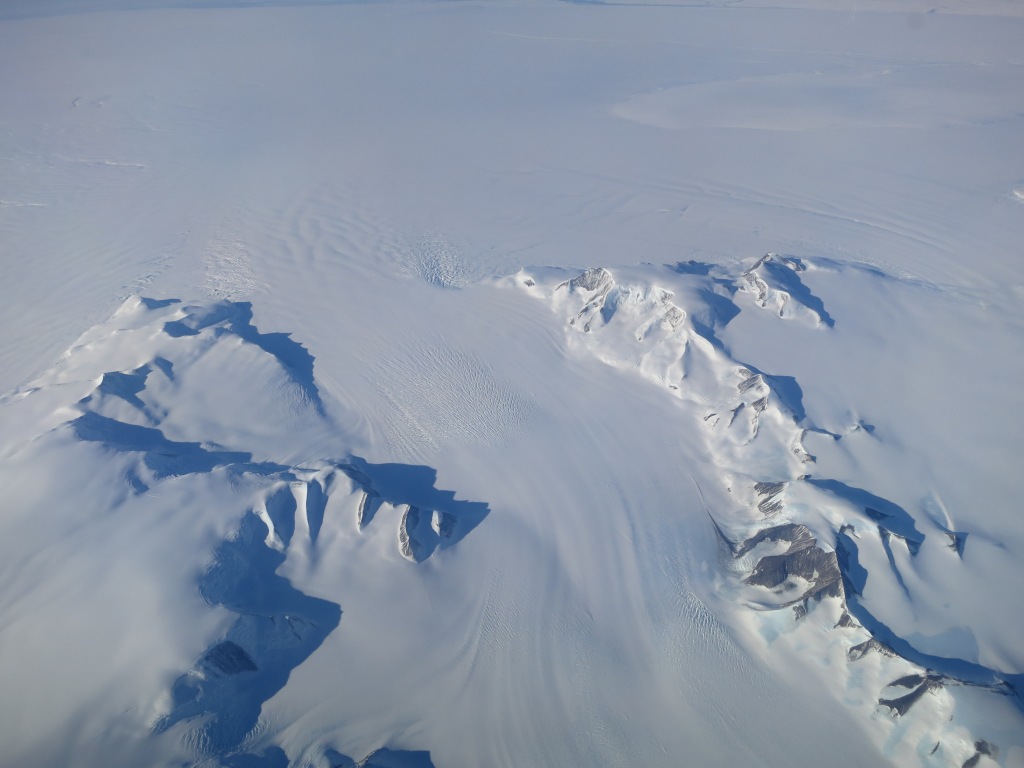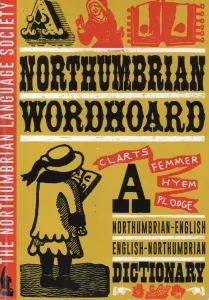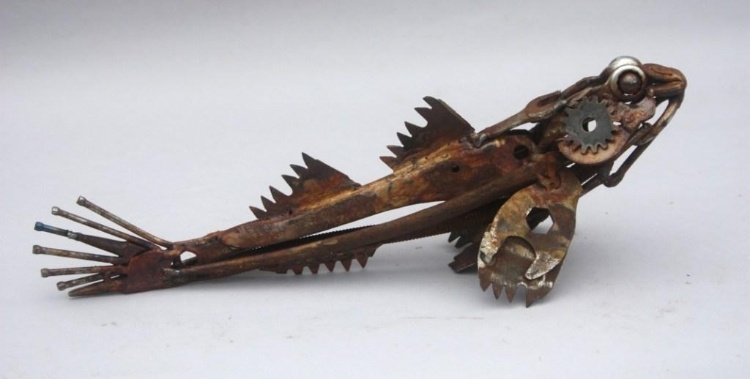Over the summer the poet Rowan Bell travelled to Amble on the Northumberland coast to talk to me about fishing, survival and extinction for the excellent online magazine The Friday Poem. This was in the context of my fourth Bloodaxe collection, Rhizodont, due out in June next year. You can read the interview, ‘A Curlew Flings its Loop of Sound’, in The Friday Poem, HERE.
With my first book and its inspiration, May Douglas (right), some Beadnell fishermen, and their family, 1990. Photo: The Berwick Advertiser.
More about Rhizodont HERE. The Rhizodont itself was a huge, predatory lobe-finned fish, which lived more than 350 million years ago. Its fossil has been found at Cocklawburn, near Berwick. From such creatures all four-limbed creatures, including humans, are descended.
The glorious cover image is by Paul Kenny, who writes of his work: ‘building on themes developed over fifty years, [it] tries to find the awe-inspiring in that which is easily passed by. It contains issues of fragility, beauty and transience in the landscape: marks and scars left by man and the potential threat to the few remaining areas of wilderness. Looking at the micro and thinking about the macro, I aim for each print to be a beautiful, irresistible, thought provoking object.’ From that description, you can probably tell why I was so delighted that he allowed me to use his work for the cover of my own.
This particular cover image, Paul writes, was ‘made with sixteen selectively cut fragments of plastic Seven-Up bottles found over three years on beaches in the west of Ireland. Suspect they all came on the Gulf Stream from the east coast of USA or Canada…The rust staining was made from a large washer found on the beach at Belderg in Mayo. Seawater collected at Belderg was seeped under for about two months.’
More of Paul Kenny’s work HERE.
Under the Ice
at Berwick Literary Festival
Saturday, October 14th, 10-11am
Berwick Baptist Church
8 Golden Square
Berwick-upon-Tweed TD15 1BG
£8
Age recommendation 12+
Beneath Antarctica’s frozen surface lie vast mountains, valleys, lakes and volcanoes. This audio-visual collaboration between poet, composer and scientists from Northumbria University takes the listener on a journey to an unseen world, exploring its implications for the climate.
Written during lockdown in 2020-21, this piece premiered online for the Wordsworth Trust. This is only its second live performance.
Under the Ice includes a brief introduction for the non-scientist, stunning satellite images, my poetry and astonishing electronic music by the late Peter Zinovieff.
Full programme for Berwick Literary Festival HERE.
Northumbrian Wordhoard
Saturday October 14th, from 1pm
Morpeth Town Hall
NE61 1LZ
The Northumbrian Language Society, of which I’ve been President since 2008, has just published its definitive dictionary. This lovely, friendly volume contains the basic 140 words needed to get by in Northumbrian today, together with a more comprehensive dictionary, Northumbrian to English and English to Northumbrian. If you are new to the area and want to find out what we are all talking about, or a native who just wants to refresh their vocabulary, this is the book for you.
It costs £10 and is available HERE.
A launch event for Northumbrian Wordhoard, with Ian Lavery MP, will precede this year’s Roland Bibby Memorial Lecture in Morpeth Town Hall on Saturday 14th October from 1pm.
This year’s lecture, Aroond the Rugged Rock: a songwriter’s journey through the cornfields and coalfields of Northumberland, is presented at 2pm by Graham Bell. Entry Free, donations welcome.
Farewell, New Networks for Nature
Lastly, I’d like to say a huge and heartfelt Thank You to all my friends at New Networks for Nature, which has very sadly come to the end its life. New Networks was launched in 2009, and thanks to founder member Mark Cocker, who introduced me to it, I’ve attended every ‘live’ meeting since 2010, most of those in the role of ‘Ambassador’. The name stood for ‘a broad alliance of creators, including poets, authors, scientists, film makers, visual artists, environmentalists, musicians and composers, whose work draws strongly on the natural environment.’ Its annual meetings ‘grew out of dissatisfaction with the low political priority placed upon nature in the UK.’ Wildlife and landscapes are often evaluated exclusively in economic or scientific terms when, in fact, they are a resource at the very heart of human creativity. New Networks for Nature proposed that the natural world is absolutely central to our cultural life, and all its activities sprung from that conviction.
Jeremy Mynott describes its history HERE.
I’m extremely grateful to all the New Networks Trustees, Steering Group and fellow Ambassadors for the enormous amount of work they have done over many years. They have indeed changed the intellectual landscape, making countless connections between artists and scientists, bringing the ecological conversation into the mainstream, and providing a model for others to take forward to a new generation. This is truly important work.
I feel extremely fortunate to have been associated with New Networks over this period. I found the conversations I had at those meetings life-affirming and confidence-boosting. I made many new friends, including the fabulous artists Harriet Mead and Carry Akroyd, poets Ruth Padel and Matt Howard, scientists Tim Birkhead, Mike Toms and John Fanshawe, singer Sam Lee, writers Mary Colwell, Jeremy Mynott, Mike McCarthy, Jonathan Elphick, Derek Neimann and Amy-Jane Beer – and too many more to mention. I’ll always think of my friends there as a kind of family.
Thank you, Mark Cocker.
Thank you, one and all.
Sawblade Goby, by Harriet Mead. Welded collage of found metal objects.





